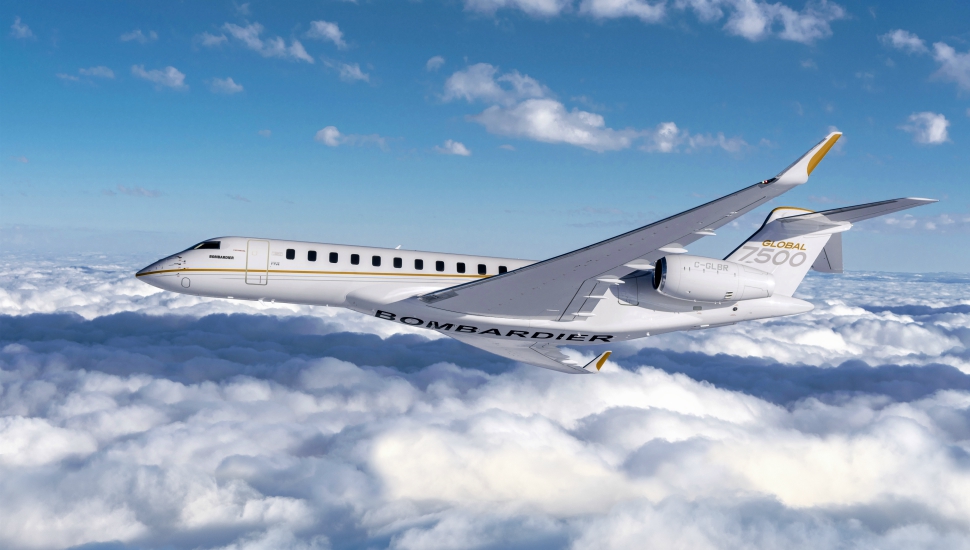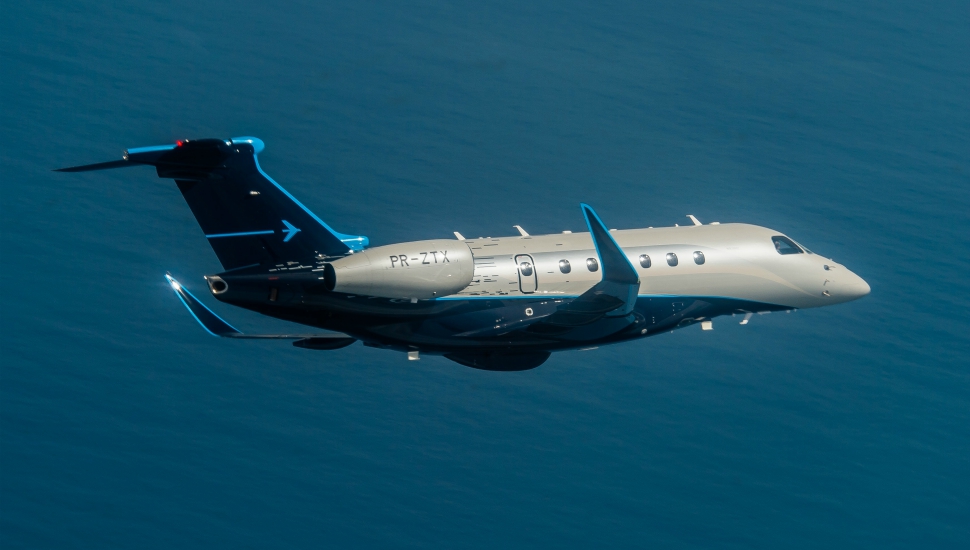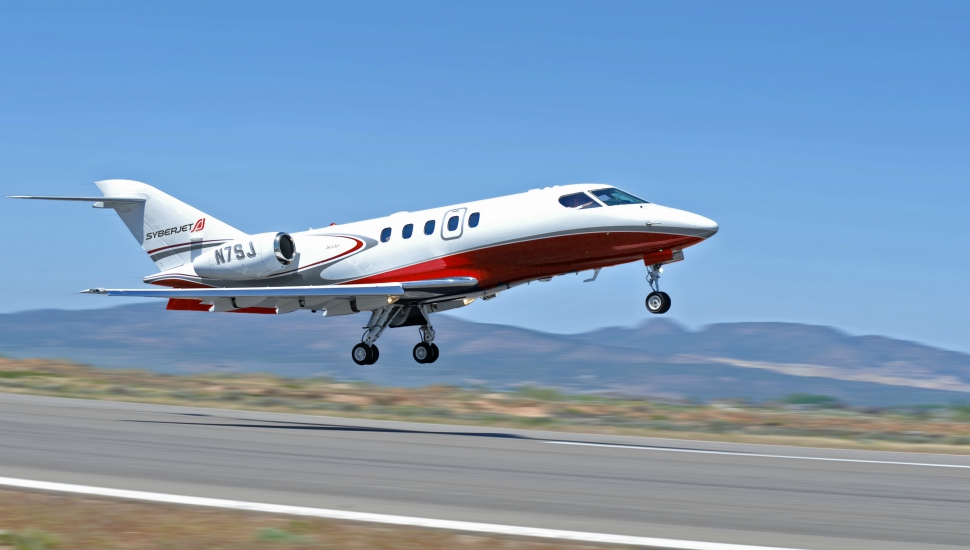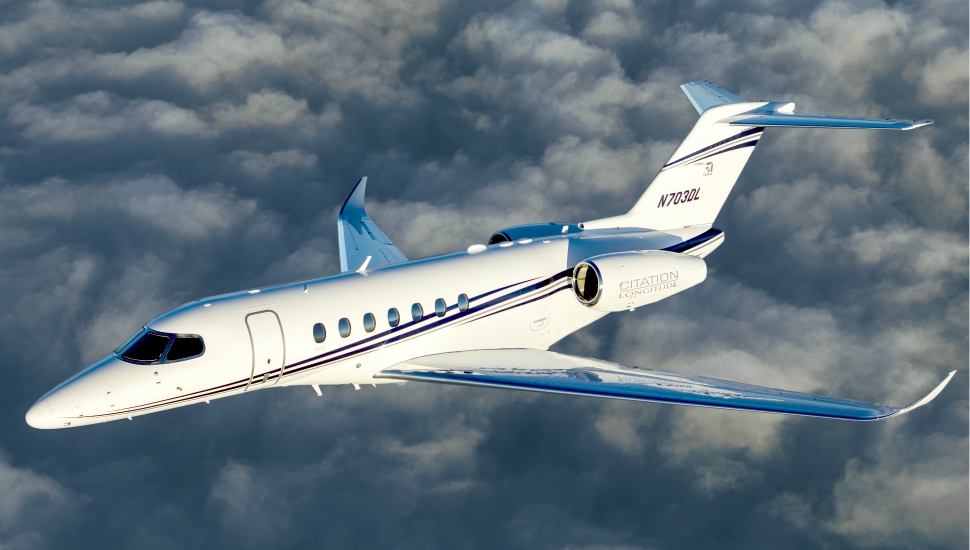As recovery gathers pace across the business aircraft industry, manufacturers are working hard to bring a range of new and revamped models to market, aiming to stimulate customer demand and bolster their orderbooks. We review the state of play for the key programmes that are set to arrive on the market over the next four years.
Airbus
Airbus is proceeding full steam ahead with the two variants its ACJ320neo corporate jetliner, for which it has already logged 14 orders and commitments.
Two aircraft – both CFM Leap 1A-powered ACJ320neos – were delivered to their owners in the first quarter. The first example was handed over in January to UK luxury charter company Acropolis Aviation, and is now undergoing cabin outfitting at AMAC Aerospace's completion centre in Basel, Switzerland. Redelivery is scheduled for the end of the year. Comlux Aviation received its ACJ320neo in March and the narrowbody is now being outfitted by sister company Comlux Completions, for redelivery in 2020.

Airbus
Airbus is also preparing to deliver the first example of the smaller ACJ319neo to German charter and management company K5 Aviation in the second quarter. The aircraft (MSN8612) made its maiden sortie on 24 April and two days later broke an endurance record for the longest flight performed by an Airbus-crewed A320-series model. The 16h 10min sortie from Toulouse to northern Greenland and back smashed the previous record set in 1999, when an Airbus-crewed ACJ319 made a 15h 15min flight from Santiago to Paris.
K5 has appointed Dutch MRO firm Fokker Techniek to outfit the aircraft on behalf of its unnamed owner. Redelivery is set for early 2020, Airbus says.
While the narrowbody Neos are gaining traction, the same cannot be said for their widebody stablemate. The Rolls-Royce Trent 7000-powered ACJ330neo joined the corporate jet family in May 2017 and despite what Airbus calls “market interest” in the product, no orders have been secured for the 9,400nm (17,400km) range aircraft to date.
Boeing
Boeing has notched up 20 orders for its re-engined VIP 737 family, with the first two examples – Max 8 variants – delivered to their undisclosed owners in August and November 2018. The pair are being outfitted by Comlux and Jet Aviation for redelivery in the second half of 2019.
The 6,640nm-range BBJ Max 8 was launched in 2014 as an upgrade and replacement to the BBJ2. This will be followed by the BBJ Max 7 and BBJ Max 9 – the next-generation versions of the BBJ and BBJ3 – which are earmarked for green delivery in 2021 and 2019 respectively.

Boeing
The BBJ Max 8 accounts for the bulk of the orderbook for the CFM Leap-1B-powered trio, with 14 units, but Boeing expects the shorter Max 7 – now with four orders – to be the most popular BBJ eventually, due to its 7,000nm-range: 360nm longer than its stablemate.
Boeing expanded its VIP widebody offering late last year with the introduction of BBJ 777X. The twin-aisle airliner is an updated version of the BBJ 777, of which Boeing has sold 13 examples to date. Nine have entered service and the remainder are in various stages of completion. Boeing describes the 777X as a "far superior offering", with GE Aviation GE9X engines and a new, more advanced composite wing.
Like the commercial aircraft on which it is based, the BBJ 777X will be available in -8 and -9 variants. The latter will be first to market with Boeing earmarking initial green delivery slots in the first quarter of 2021.
Priced at $450 million for a green aircraft, the BBJ 777-9 boasts a 342sqm (3,690sq ft) cabin and a range of 11,000nm. The BBJ 777-8 will follow in October 2022. With a green price tag of $440 million, it has a 303sqm cabin and a range of 11,600nm.
Bombardier
The Canadian airframer is experiencing one of the busiest periods in its history, with work currently under way on no less than four aircraft.
The Global 7500, its highest-end product, entered service late last year after an eight-year development effort for the 7,700nm range GE Aviation Passport-powered aircraft. Eight examples are now in service including the first European-owned and registered model, which was delivered to long-time customer, former Formula 1 racing driver and airline entrepreneur Niki Lauda.
With the longest cabin in the market at 16.5m (54ft) – about 2.5m more than the G650 and 3.5m longer than the Dassault Falcon 8X – Bombardier claims the Global 7500 is the only aircraft in its segment with "four customisable living areas".

Bombardier
Work on its latest products, the Global 5500 and 6500, is also progressing well with more than 90% of testing complete across the three flight-test vehicles. Entry into service is scheduled for year-end.
The pair were unveiled a year ago as updated and longer-range versions of the Global 5000 and 6000, which remain in service.
Powered by the all-new Rolls-Royce Pearl 15 powerplant, the 5500/6500 feature a revamped interior, new wings designed by Mitsubishi Heavy Industries, and a true combined vision system – a first for a new business jet.
While the Global family is consuming a large chunk of Bombardier’s business jet development funding, the lower end of its product line is not being ignored. Last year the airframer introduced an avionics upgrade for its Learjet 70 and 75 – a move that could help to stimulate demand for the slow-selling light and superlight types, themselves an update to the Learjet 40 and 45. Equipped with the Garmin G5000 flightdeck, the pair are now undergoing flight-testing and service entry is on track for year-end. The upgrade will also be available as a retrofit for existing Learjet 70 and 75 operators.
Dassault
Since launching the Falcon 6X in February 2018, Dassault has stuck diligently to its development schedule for the superwide business jet, keen to avoid the lingering embarrassment of its predecessor.
The 5X – perpetually delayed thanks to its underperforming Safran Silvercrest engines – was axed in December 2017, but the woes of that programme are now firmly in the past.
Dassault is looking to bring the 6X to market in 2022, and although no date has been given for its first flight, parts for the initial prototype are being made and four Pratt & Whitney Canada PW812D engines are currently in test, with more than 120h accumulated on a Boeing 747 flying testbed.

Dassault
Dassault describes its latest model as “even better than the 5X”. Although it shares the same cabin cross-section, wings and most systems with its ill-fated forerunner, noticeable changes have been incorporated into the new design. The 6X will be 51cm (20in) longer and fly 300nm further – taking its range to 5,500nm at Mach 0.80.
Behind the scenes, Dassault is working on a number of new Falcons. While it remains tight-lipped on the segments it is seeking to address with the new models, one of the designs is likely to be a larger and longer-range variant of the 6X. This aircraft will allow Dassault to compete at the top end of the traditional business jet sector against the Global 7500 and the long-established 7,500nm-range G650ER.
Embraer
In October 2018, the Brazilian manufacturer added to the pressure in the hugely competitive and crowded midsize market with the launch of the Praetor 500 and 600.
The latter secured Brazilian certification in April and European and US approval in May, and Embraer is now preparing to deliver the first examples early in the third quarter. The $21 million super-midsize Praetor 600 is a derivative of the Legacy 500, featuring more powerful Honeywell HTF7500E engines, new winglets, additional fuel capacity, a sector-topping range of 4,000nm and a bespoke interior called Bossa Nova.
The Praetor 500 is a derivative of the Legacy 450, featuring additional fuel cells in wings to help to deliver the longest range in the midsize sector at 3,250nm. The $17 million aircraft is scheduled for certification and service entry in the third quarter.

Embraer
The Praetors are the only midsize and super-midsize business jets with full fly-by-wire technology and active turbulence reduction, with the latter designed to “give customers the smoothest possible ride”, says Embraer. The pair have a 5,800ft (1,770m) cabin altitude “for ultimate passenger comfort”.
The Praetors also have a Honeywell Ovation Select cabin management system, a Collins Aerospace Pro Line Fusion flightdeck with an industry-first vertical weather display, “air traffic control-like” situational awareness with automatic dependent surveillance – broadcast in and a predictive windshear radar capability.
Epic Aircraft
Epic Aircraft hopes to secure US type certification of its E1000 in the second half of the year, and is now prepping the high-speed single-engined turboprop for type inspection authorisation. This approval, expected in the coming weeks, will clear the way for Federal Aviation Administration personnel to join flight-test activities. The two prototypes in the flight-test campaign have logged around 1,000h and the Pratt & Whitney Canada PT6-67A-powered pair have achieved “industry-leading” maximum cruise speeds in excess of 333kt (617km/h). The E1000's nearest rival, the Daher TBM 940, boasts a high-speed cruise of 330kt. Preliminary performance data puts the type’s range at 1,650nm and fuel consumption at 45USgal/h at cruise altitude, with a 34,000ft operating ceiling.

Epic Aircraft
The Bend, Oregon-based company has secured more than 80 orders for the Garmin G1000 NXi-equipped E1000 to date and plans to deliver six aircraft this year, and more than 12 in 2020.
The E1000 was launched in 2014 as a certificated variant of the LT kitplane, the 54th and final example of which will be delivered to its owner in June.
Gulfstream
With certification and service entry of the superwide-cabin G500 now behind it, Gulfstream is focusing on bringing its larger and longer-range stablemate, the G600, to market. The certification programme has faced delays that parent company General Dynamics blames on the “FAA’s rigorous review process”. However, it is confident of securing approval for the 6,500nm-range aircraft before the end of June, with service entry “on track” to follow in the second half of the year. By the end of April, the five aircraft in the G600 flight-test programme had logged more than 3,150h over 840 flights. Gulfstream says some trials related to function and reliability testing are still outstanding. The company meanwhile continues to ramp-up production of the nacelle system for the Pratt & Whitney Canada PW800 engine that powers the G500 and G600. It acquired the nacelle line in September from its former supplier Nordam, after mounting debts forced the aerostructures company to suspend output and file for Chapter 11 bankruptcy protection. The Oklahoma-based firm emerged from this in April after reorganisation and a $140 million cash infusion from private equity company The Carlyle Group.

Gulfstream
Behind the scenes, Gulfstream’s product development is continuing in earnest. The company is likely to launch an aircraft in the next year as an answer to the Global 7500, which has a longer cabin and flies further than its 7,500nm flagship, the G650ER. The new model could be a stretched G600 an marketed as the G750. Gulfstream could also field a new long-range model further down the line, to fill the yawning gap in its six-strong product line between the super-midsize G280 and G500.
Nextant Aerospace
With two remanufactured business aircraft programmes successfully completed – the 400XTi light business jet and the King Air G90XT twin-engined turboprop – Nextant is now concentrating on its latest projects. The flagship 604XT, an upgraded version of the Bombardier Challenger 604, secured supplemental type certification in November 2018 for its Collins Aerospace Pro Line Fusion retrofit, and deliveries began the following month. Improvements over the original Pro Line 4 cockpit include three large-format displays, touch-interactive maps with eyes-forward flight planning, synthetic vision, high-resolution topography and real-time onboard weather radar overlays. The second phase of the 604XT modernisation programme is now under way, introducing a redesigned cabin and a host of performance enhancements including a wing extension, which boosts the twinjet’s range by up to 500nm. A timeframe for certification has not been released.

Nextant Aerospace
Nextant is also developing a baseline version of the $5.4 million 400XTi aimed at owners and operators who are not looking for a high-specification version of the remanufactured Beechcraft and Hawker 400-series business jet. Called the 400XTe, the $4.5 million aircraft will feature the same Pro Line 21 flightdeck as its stablemate, but with a three-screen rather than a four-screen layout, and the option of a high-density seating configuration that will carry up to nine passengers – two more than a typical XTi layout. Approval is expected this year.
Syberjet
SyberJet is hoping to fly the SJ30i high-performance light business jet this year and is targeting certification and service entry of the aircraft in 2020. The company, headquartered in San Antonio, Texas, says it is currently awaiting final adjustments to the aircraft’s hardware and software “to allow us to move forward with final ground functional tests prior to flight”.

Syberjet
The Williams International FJ44-3AP-2A-powered SJ30i is an upgraded version of the SJ30-2, which was certificated in 2005 by its former owner Emivest Aerospace. Four examples were delivered and remain in service.
The programme was acquired in 2011 by SyberJet’s parent MTI, whose subsidiary, Metalcraft Technologies, was the aft fuselage supplier for the aircraft.
The SJ30i has the same performance as its predecessor, including a 2,500nm range and a cruise speed of 490kt. Key differences are a redesigned interior, which Fairchild says “improves aesthetics, reduces weight, and lowers manufacturing and installation costs”, and a bespoke cockpit, dubbed SyberVision.
Based on Honeywell’s Primus Epic 2.0 system, the flightdeck offers four 12in displays, SmartView synthetic vision, a moving map display system, and dual flight management systems. SyberVision also meets automatic dependent surveillance – broadcast out requirements, which will become compulsory in the USA and Europe from January and June 2020, respectively.
The SJ30i fleet will consist of the five unsold and incomplete units that MTI acquired from Emivest, with the first example currently in assembly.
Serial number 15 will be the first aircraft to be wholly produced by SyberJet, and the initial example of the airframer’s new standard model, the SJ30x. Priced at $8.8 million, these aircraft will be powered by more fuel-efficient, higher-thrust FJ44-3AP-25 turbofans.
The SJ30x will see changes to its fuel system, avionics display software, electrical systems, bleed air, and basic structure.
Certification and service entry are expected in 2021.
Textron Aviation
Provisional US type certification for the Cessna Citation Longitude was secured late last year, but full approval is not expected until early in the third quarter, with Textron Aviation blaming the Federal Aviation Administration’s unanticipated and lengthy documentation process for the delay. The company says once final approval is received, customer deliveries will begin in earnest.

Textron Aviation
Development of Textron's turboprop pair – the single-engined Denali and SkyCourier twin – is progressing well, with both aircraft expected to make their debut flights before year-end and achieve certification about 12 months later.
The Denali is Textron’s answer to the top-selling Pilatus PC-12NG and high-performance Daher TBM 930. Powered by a GE Aviation Catalyst turboprop, it is projected to have a 1,600nm range and cruise at 285kt.
The SkyCourier is marketed as both a cargo and passenger aircraft. Powered by Pratt & Whitney Canada PT6A-65SCs, the aircraft will be capable of carrying 2,720kg (6,000lb) of cargo or 19 passengers (or a mix of both) and will have a range of up to 900nm.
Meanwhile, development of the Hemisphere remains on hold. Textron says a revised schedule will be set out for the large-cabin business jet after Safran completes validation testing of the redesigned high-pressure compressor on the troubled Silvercrest engine that has been selected to power the 12-passenger twinjet. Testing is expected to be wrapped up in the third quarter. The airframer is committed to the 12-seat Hemisphere, with its allegiance to the 4,500nm-range aircraft no doubt strengthened by an order from its largest customer, NetJets, for up to 150 examples.
2019EBACE
Find all the latest news, pictures, video and analysis from EBACE 2019 on our dedicated page.
latestnewsmainpage
Source: Flight International



















